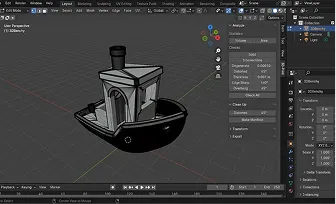Remodelling, resizing, and scaling of existing 3D models

Introduction to Remodeling, Resizing, and Scaling of 3D Models
Remodeling, resizing, and scaling are essential processes in 3D design to modify and adapt existing models for different applications. Whether updating an outdated model, resizing for specific proportions, or adjusting scale for manufacturing or visualization purposes, these processes ensure that the 3D models meet the desired specifications and functionality.
Remodeling 3D Models
Remodeling involves modifying the geometry or structure of an existing 3D model to better suit new requirements. This can include altering shapes, adding or removing details, or optimizing the design for different manufacturing processes or product specifications. Remodeling can significantly improve the quality and functionality of a model.
Resizing 3D Models
Resizing is the process of changing the overall dimensions of a 3D model. Whether increasing or decreasing the size, resizing can be necessary for adapting a design for different uses, such as fitting within a new environment or adjusting to a specific scale for manufacturing. The challenge is maintaining the proportions and accuracy of the model during resizing.
Scaling 3D Models
Scaling refers to changing the size of a 3D model while preserving its proportions. This is critical when models need to be resized for different contexts, like scaling up a product design for a prototype or scaling down for smaller applications. Scaling is also used to adjust a model to real-world measurements or specific manufacturing constraints.
Tools for Remodeling, Resizing, and Scaling 3D Models
Several 3D design tools can facilitate remodeling, resizing, and scaling, including SolidWorks, Autodesk Maya, Blender, and Fusion 360. These tools offer various features such as mesh editing, parametric design adjustments, and scaling algorithms that maintain the integrity of the model during modification.
Applications of Remodeling, Resizing, and Scaling
Remodeling, resizing, and scaling are crucial in industries such as manufacturing, automotive, and product design. These processes allow for the adaptation of existing models to new production techniques, client specifications, or changes in market trends. They also play a vital role in 3D printing, where precision and fit are key factors.
Benefits of Remodeling, Resizing, and Scaling
The benefits include optimizing designs for cost-effective production, ensuring that models fit new functional or aesthetic requirements, and enhancing the accuracy of the models for real-world applications. It also helps to save time by adapting existing models instead of starting from scratch, streamlining the design process and reducing costs.
Final Output & Deliverables
The final deliverables for remodeled, resized, or scaled 3D models typically include files in formats like STL, OBJ, or STEP, ready for prototyping, manufacturing, or digital rendering. These models must maintain their accuracy and proportions to ensure proper functionality in their intended applications.
